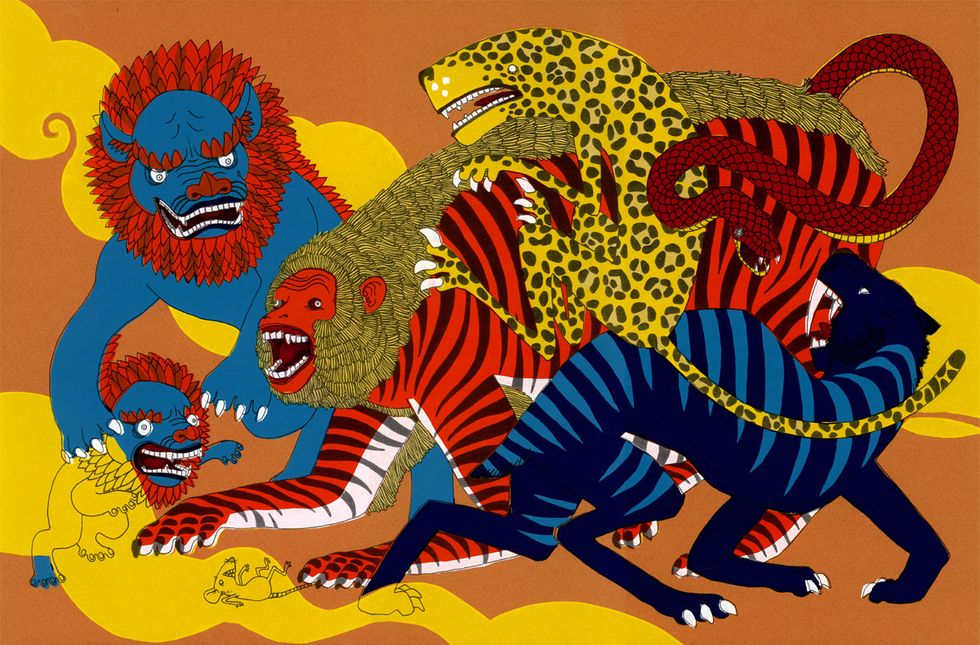Monsters, aberrations, things that go bump in the night. Many of us are told tales of fearsome beasts and less-than-innocuous spirits and kids, further enforced by a steady stream of horror films and the like. However, the mantle of "monster" seems to have gone through several different incarnations in the past centuries, to the point where an excess of claws or mutilated complexions is enough to cut it. In my case, I find myself nurturing a nostalgic crush for the fiends of old, with one particularly virulent contender: the Japanese chimera.
I assume most of us are familiar enough with the European variant. The head of a lion, body of a goat, and the tail of the serpent; such an audacious torsion of nature is easily recognized. That said, despite its obviously sinister appearance, there isn't much other substance to the beast beyond the state of its being. For a time, that was enough mythos to sate my appetite, and I went about my life oblivious to the creature's more decent, and more lethal cousin.
The Japanese chimera, or nue, while not completely dissimilar to its European counterpart, varies greatly in terms of depiction and behavior. Sporting the head of a monkey, the legs of a tiger, and the front end of a serpent for a tail, the nue wields a terrifying arsenal on par if not superior to its better-known associate. I've chosen not to include any descriptions of the nue's torso, primarily because no one scholar is entirely sure what its comprised of. A few sparse accounts attribute its body to that of a raccoon spirit, yet more often than not its core is left ambiguous. And, whether on purpose or a byproduct of the passage of time, this exclusion adds to the already rich depth of the nue's character.
Indeed, as I continued to delve and meditate on this bizarre amalgamation, the true horror of the creature eventually hit me like a wall of bricks. Specifically, the danger lies not in the sum of all the chimera's parts, but the divided perspective born from each distinct piece. For a nue, its most powerful weapon is neither its venom nor its fangs, but the deception it wields whilst stalking through the night. I might spy the creature, see only a humble monkey, and carry on my way. You might encounter it, and think it the profile of a tiger out on the hunt, and hasten to steer clear of it. A third still may come face to face with its more cold-blooded appendage, and achieve a similar outcome.
Such a complex ruse is accomplished even at a distance, as the nue possesses the harsh screeching voice of a white thrush. In fact, the Japanese character that represents the clever abomination can often be read as "the fabulous chimera bird", as it possesses the radical symbol for the thrush within the larger pictograph. Back in older times, locals would take fearful pause to try and discern the squawk of a songbird from the call of the chimera. Some several generations later, I too find myself taking a closer listen to those that murmur and rustle about in the dead of night. In the event such an avatar of trickery and murderous intent does find its way overseas, I daresay our myths and tales will have left us very much for ill.






















